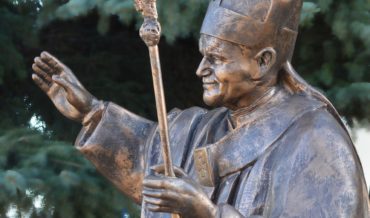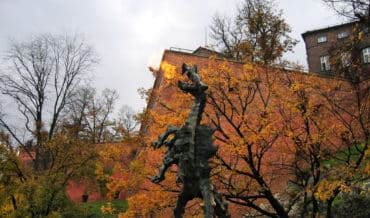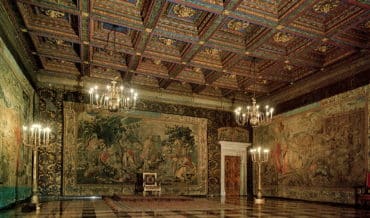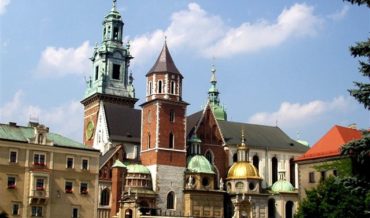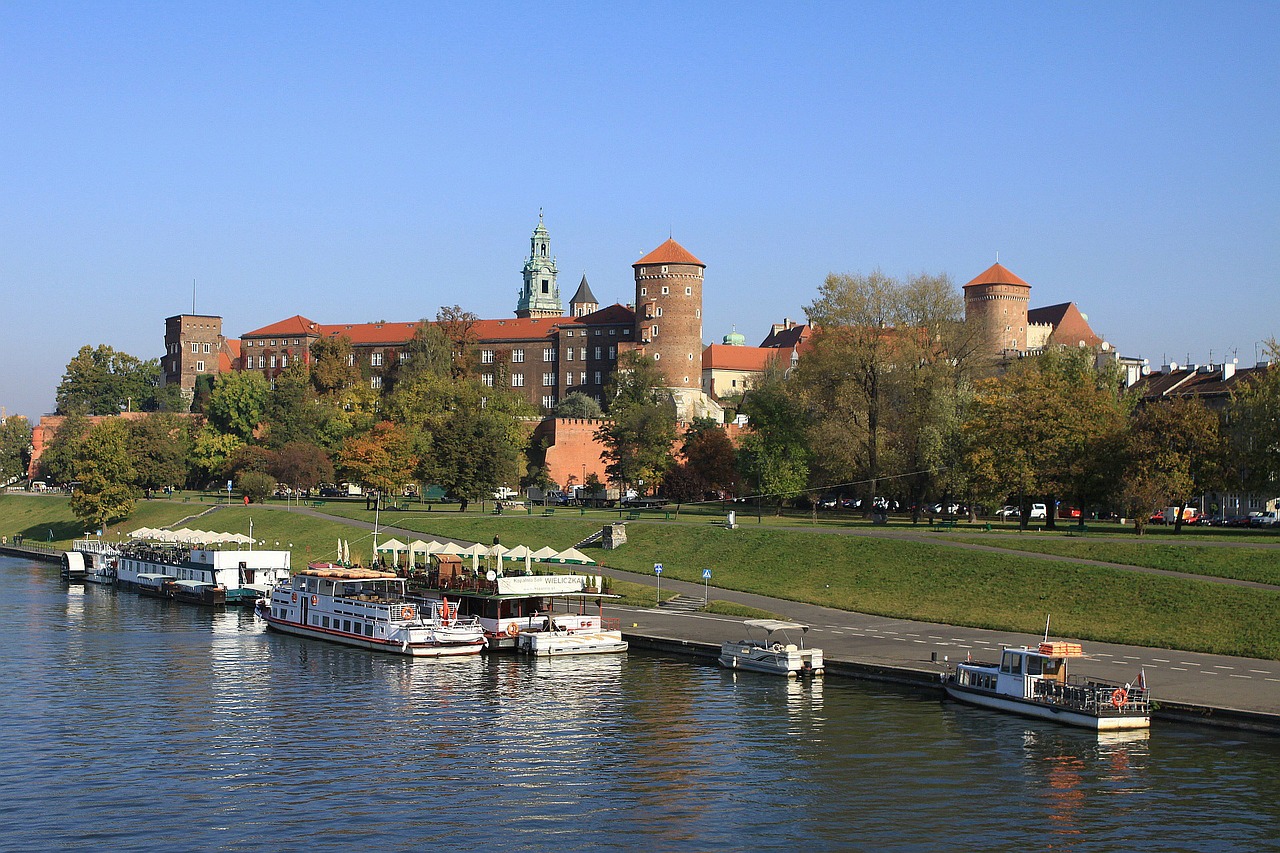Contents
- 1 Key Facts
- 2 Early Life and Education
- 3 Academic Achievement and Ordination
- 4 Early Ministry and Educational Work
- 5 The Wadowice Years: Mentoring the Future Pope
- 6 Return to Wawel Cathedral
- 7 Heroic Ministry During Nazi Occupation (1939-1945)
- 8 Post-War Leadership and Historical Research
- 9 Personal Character and Pastoral Approach
- 10 Enduring Connection to Pope John Paul II
- 11 Legacy and Death
Key Facts
• Born and died in Krakow (1903-1983), spending his entire life serving the city
• Pastor of the Wawel Cathedral and prominent Catholic prelate
• Confessor and spiritual mentor of Karol Wojtyła (future Pope John Paul II) in Wadowice
• Heroic service during Nazi occupation – eventually became the sole priest allowed to conduct masses at Wawel Cathedral
• Archaeological researcher – his scholarly work contributed to the discovery of King Kazimierz's tomb
• Doctor of Theology from the prestigious Jagiellonian University (1926)
Early Life and Education
Kazimierz Figlewicz was a distinguished Polish priest, prelate, and pastor of the Wawel Cathedral, born and died in Krakow (1903-1983). His life was deeply intertwined with the religious and cultural fabric of Poland's ancient capital, spanning eight decades of devoted service to the Catholic Church and the Polish people during some of the most turbulent periods in Polish history.
Born into a devout Catholic family in Krakow at the beginning of the 20th century, Figlewicz demonstrated an early calling to religious life. He entered the theological seminary in Krakow, where his intellectual gifts and spiritual dedication distinguished him among his peers. His theological education continued at the renowned Jagiellonian University, one of Central Europe's oldest academic institutions, founded in 1364.
Academic Achievement and Ordination
Figlewicz was ordained as a priest in 1925, beginning what would become an influential ecclesiastical career spanning nearly six decades. His commitment to scholarly excellence was demonstrated when he completed his doctoral studies in theology at Jagiellonian University in 1926. This advanced theological education provided him with the intellectual foundation that would later enable his contributions to religious scholarship and historical research at Wawel Cathedral.
Early Ministry and Educational Work
Following ordination, Figlewicz served as a curate in Ruszcza, a rural parish where he demonstrated his multifaceted pastoral approach. He simultaneously taught at the local school, reflecting the traditional Catholic emphasis on education and his personal commitment to intellectual development. This dual role of spiritual guide and educator established a pattern that would characterize his entire ministry.
The Wadowice Years: Mentoring the Future Pope
Figlewicz's assignment to Wadowice proved historically significant beyond measure. Serving as both vicar and catechist in this small town, he encountered a spiritually precocious altar boy named Karol Wojtyła. This pastoral relationship would develop into a lifelong spiritual friendship with profound implications for the Catholic Church.
As Karol Wojtyła's confessor and spiritual director, Figlewicz recognized the young man's exceptional spiritual maturity and intellectual capacity. Their relationship was characterized by deep theological discussions, shared literary interests, and mutual respect. According to biographical accounts, Figlewicz encouraged Wojtyła's intellectual pursuits while nurturing his spiritual development during the formative teenage years, helping to shape the Catholic traditions in Poland that would influence his future papal ministry.
Even decades later, as Pope John Paul II, Wojtyła would publicly acknowledge Father Figlewicz's formative influence on his priestly vocation and spiritual life, describing him as a wise and saintly mentor who shaped his understanding of pastoral ministry.
Return to Wawel Cathedral
In 1933, Figlewicz was appointed vicar of Wawel Cathedral, returning to his native Krakow to serve at Poland's most sacred religious site. The Wawel Cathedral, situated within the Wawel Castle complex, serves as the coronation church of Polish monarchs and houses the tombs of kings, national heroes, and prominent church figures, making it the spiritual center of Polish Catholic identity. Located near Krakow's historic Old Town and the bustling Main Square, the cathedral stands as a monument to Poland's religious heritage.
Heroic Ministry During Nazi Occupation (1939-1945)
The German invasion of Poland in September 1939 brought severe persecution to Polish clergy and the systematic suppression of Catholic religious practice. The Nazi authorities expelled all Poles from the Wawel complex and initially closed the cathedral entirely, viewing it as a dangerous symbol of Polish national and religious identity.
Through persistent diplomatic efforts by Metropolitan Adam Stefan Sapieha, the Prince-Archbishop of Krakow, limited religious services were eventually permitted. The German authorities allowed mass to be celebrated only twice weekly, without faithful present, and under armed German supervision. This represented a minimal concession designed to avoid complete religious martyrdom while maintaining Nazi control.
Figlewicz was initially one of two priests authorized to conduct these closely monitored services, alongside Father S. Jankowski. As Nazi restrictions intensified throughout the occupation, Figlewicz eventually became the sole priest permitted to celebrate mass at Wawel Cathedral. His courage in maintaining Catholic liturgical continuity at Poland's most important religious site, despite constant surveillance and personal danger, exemplified extraordinary pastoral dedication during the darkest period of Polish history.
Post-War Leadership and Historical Research
Following Poland's liberation in 1945, Figlewicz's responsibilities expanded as he was appointed pastor of Wawel Cathedral. In this role, he oversaw both the restoration of full religious services and the cathedral's historical preservation efforts. His scholarly background in theology, combined with his intimate knowledge of the cathedral's history, made him uniquely qualified for this dual responsibility.
Figlewicz's historical research and archaeological oversight contributed to the significant discovery of King Kazimierz's tomb, adding to the cathedral's collection of royal burial sites. This discovery, made possible through his coordination of careful excavation work and historical documentation, provided valuable insights into medieval Polish royal burial practices and enhanced understanding of the cathedral's role as the necropolis of Polish monarchs.
Personal Character and Pastoral Approach
Contemporary accounts describe Father Figlewicz as a compassionate and intellectually gifted pastor who earned deep affection from parishioners across social classes. His pastoral ministry combined theological sophistication with genuine human warmth, enabling him to serve effectively as confessor to both ordinary faithful and future church leaders.
His ability to maintain meaningful relationships across decades – from his early mentorship of young Karol Wojtyła to his later service as cathedral pastor – demonstrated exceptional personal qualities and pastoral wisdom. These characteristics made him a trusted spiritual guide and a bridge between different generations of Polish Catholics.
Enduring Connection to Pope John Paul II
The friendship between Figlewicz and Karol Wojtyła continued throughout both men's ecclesiastical advancement. When Wojtyła returned to Krakow as auxiliary bishop in 1958 and later as Archbishop in 1964, their relationship evolved but maintained its foundational respect and affection.
Following Wojtyła's papal election in 1978, Pope John Paul II continued to acknowledge publicly Father Figlewicz's formative influence on his spiritual development. The Pope's references to his former confessor in various addresses and writings testified to the lasting impact of Figlewicz's mentorship during his crucial adolescent years in Wadowice.
Legacy and Death
Father Figlewicz died in 1983, completing exactly eight decades of life entirely devoted to serving Krakow and the Catholic Church. His death marked the end of a remarkable ecclesiastical career that spanned the Polish independence period, World War II, the communist era, and the beginning of the Solidarity movement.
His legacy encompasses not only his direct pastoral ministry to thousands of faithful over nearly sixty years of priesthood, but also his indirect contribution to the formation of Pope John John Paul II. Through his mentorship of the future pope, Figlewicz's spiritual influence extended far beyond his beloved Krakow to impact the global Catholic Church.
The scholarly work he conducted at Wawel Cathedral, his courageous ministry during the Nazi occupation, and his decades of faithful pastoral service established him as one of the most significant Polish clergy of the twentieth century, representing the best traditions of Polish Catholicism through times of both persecution and renewal.
